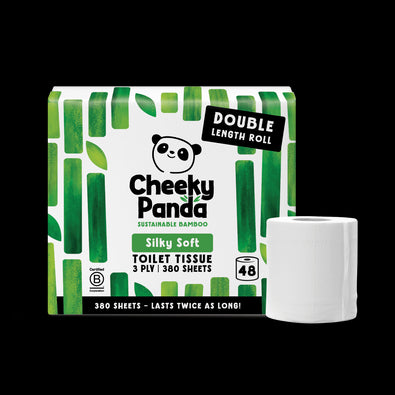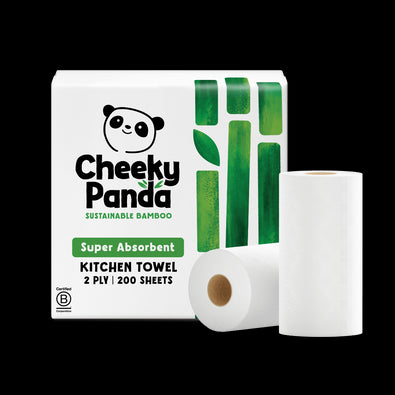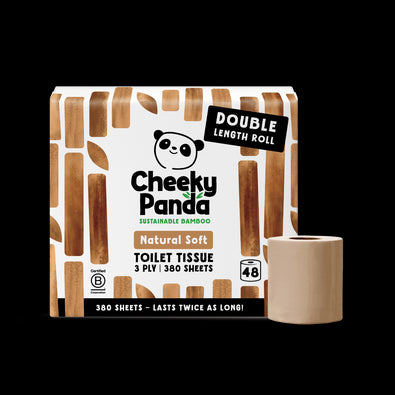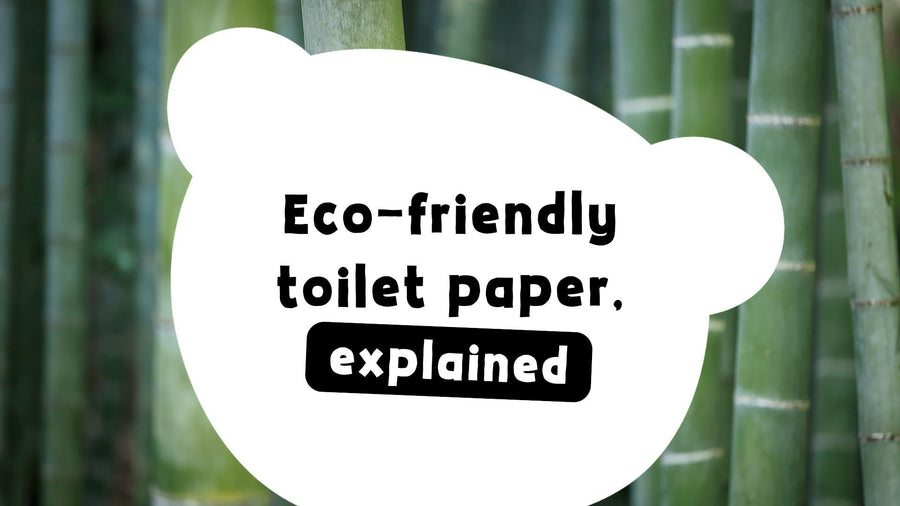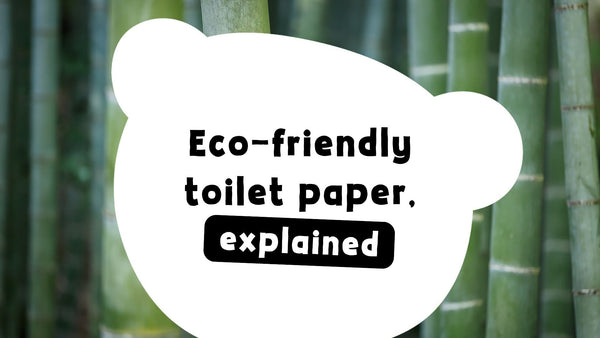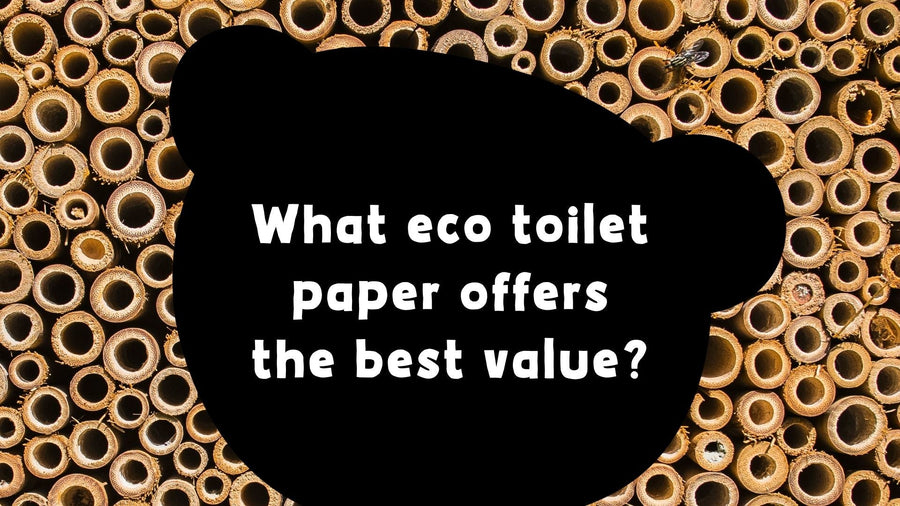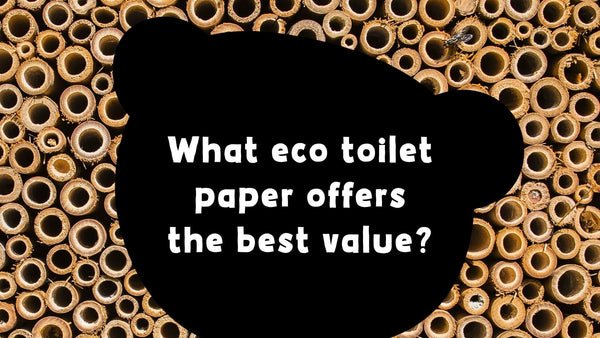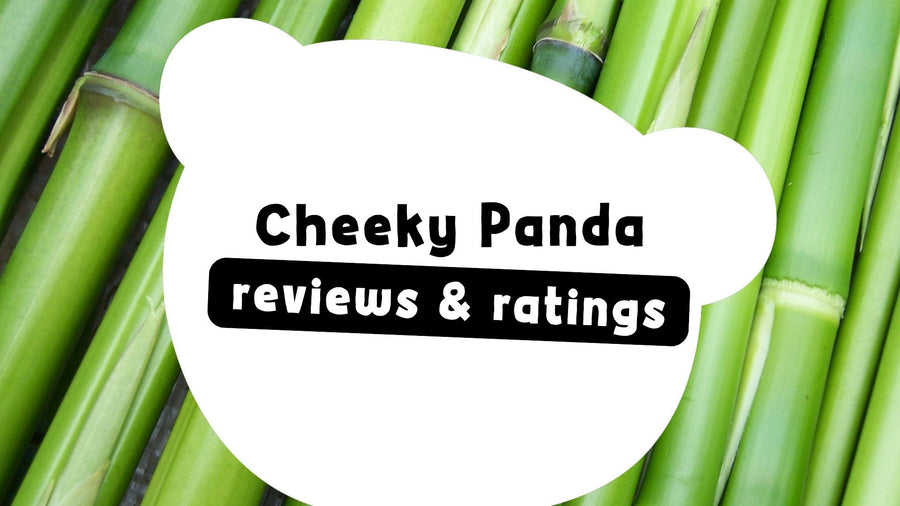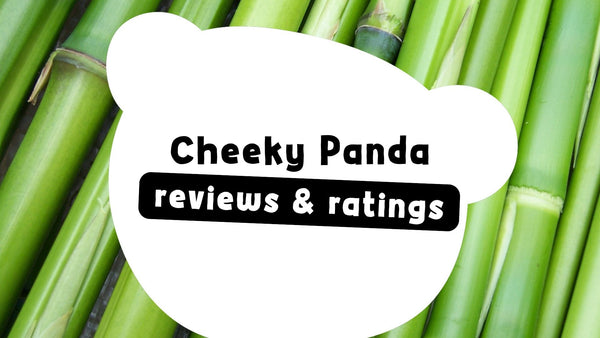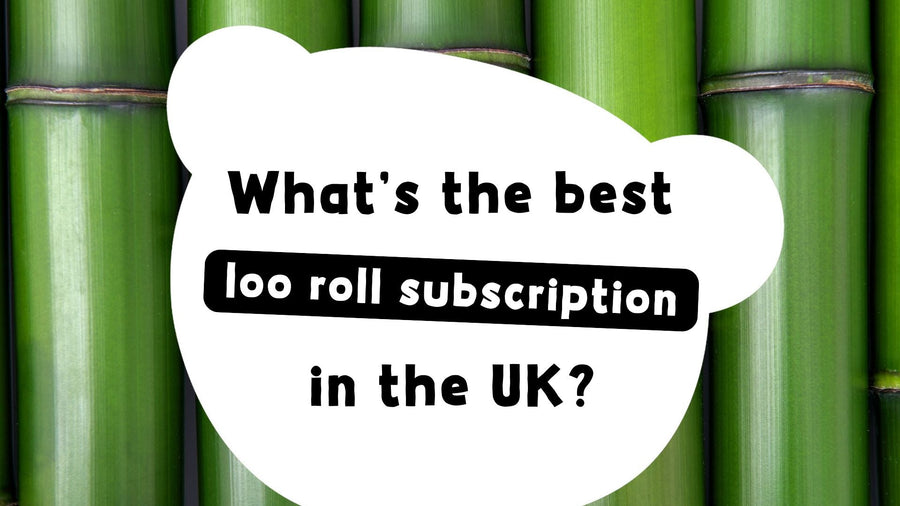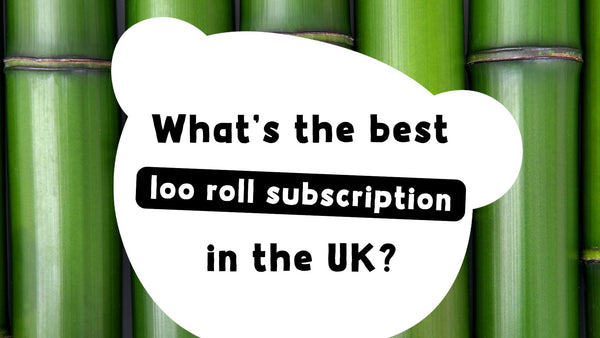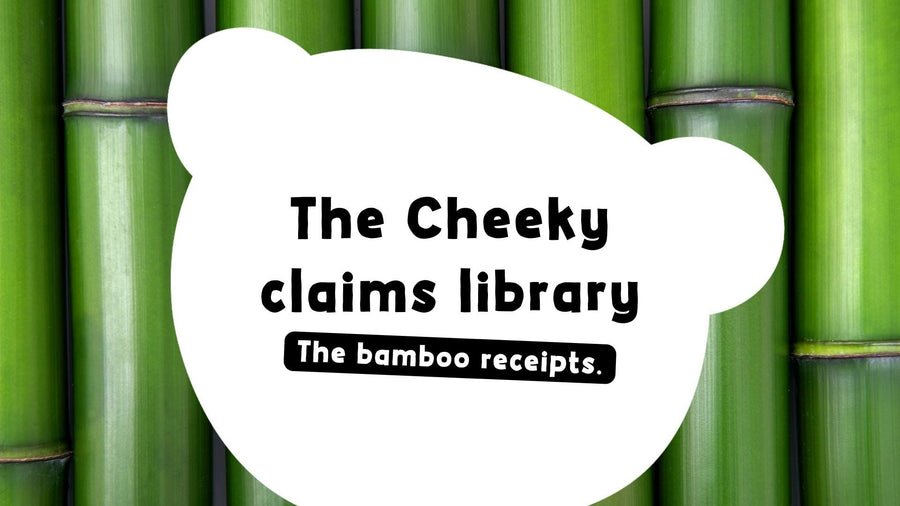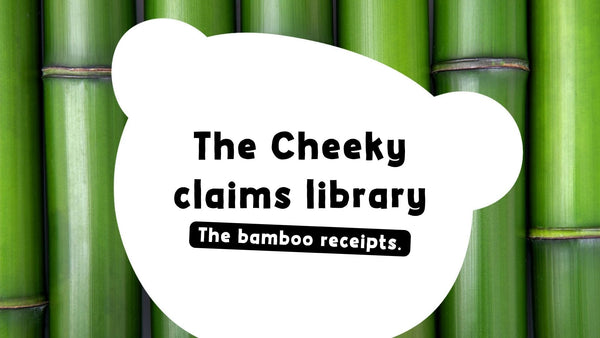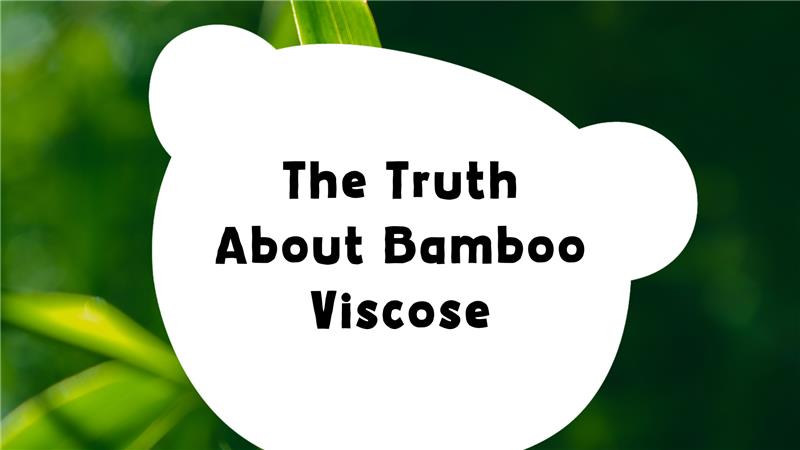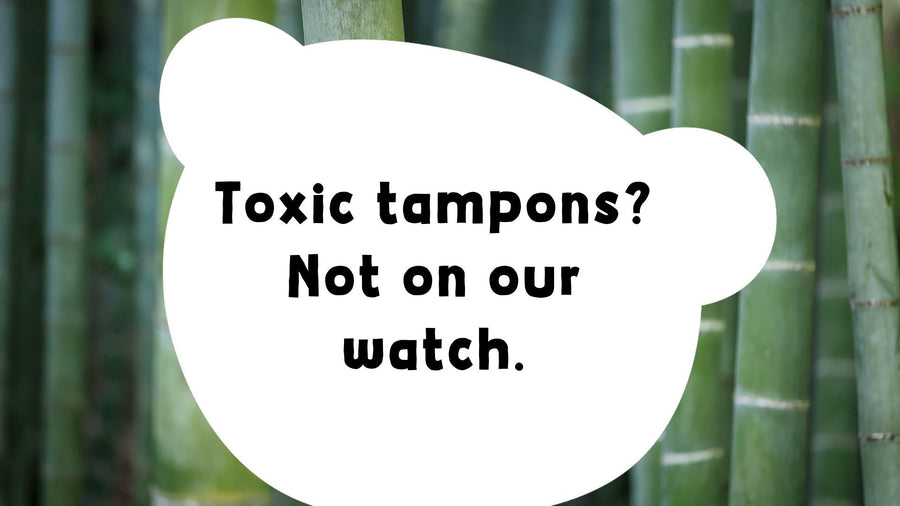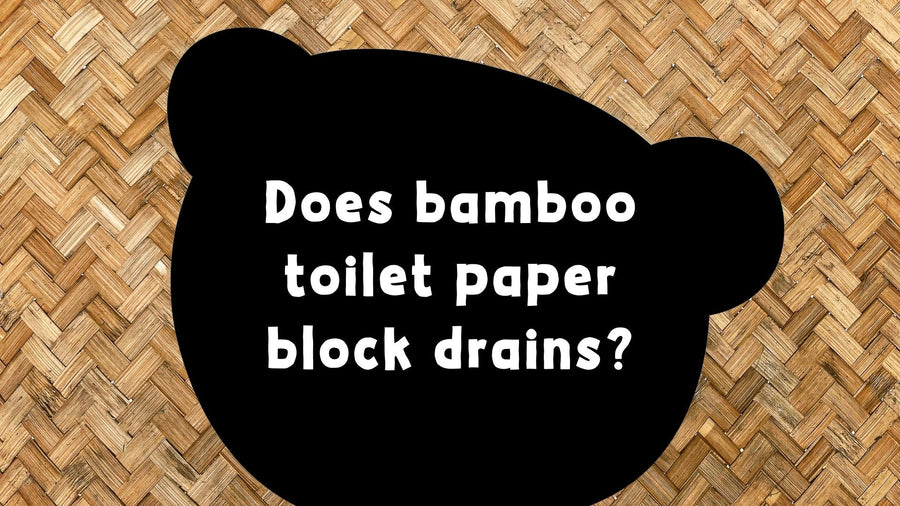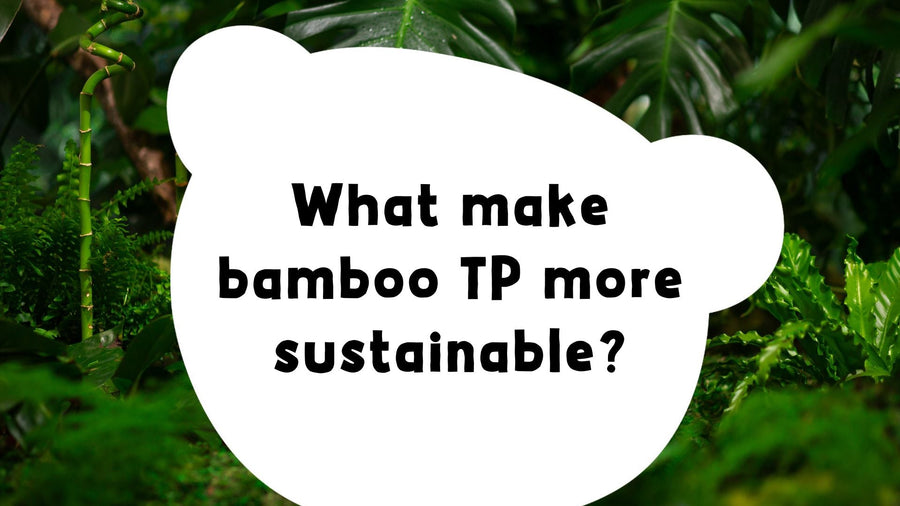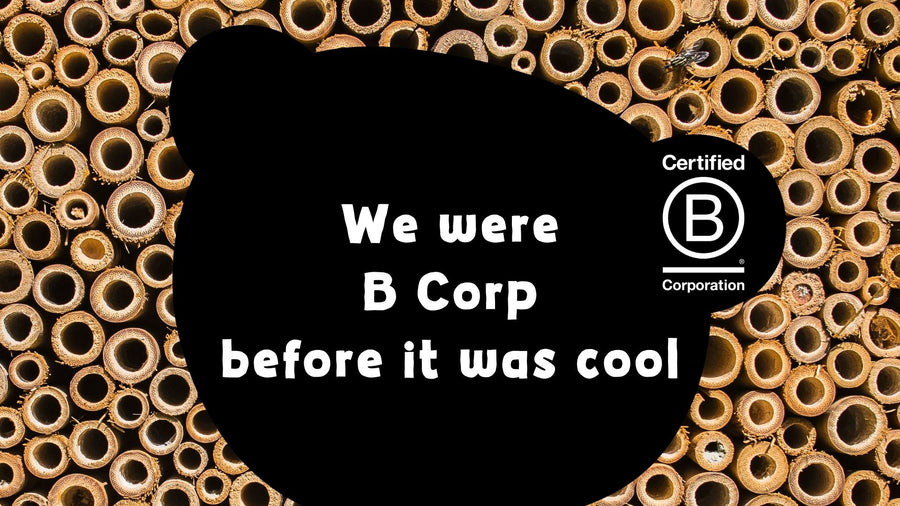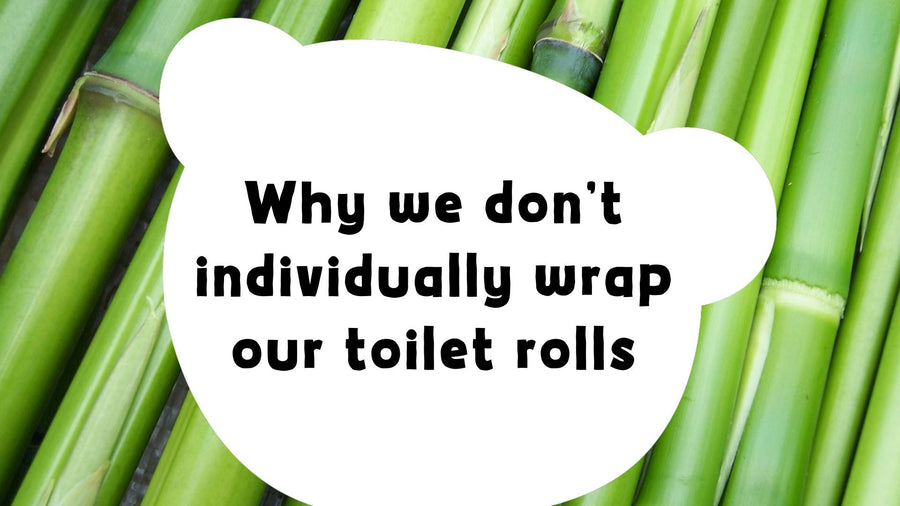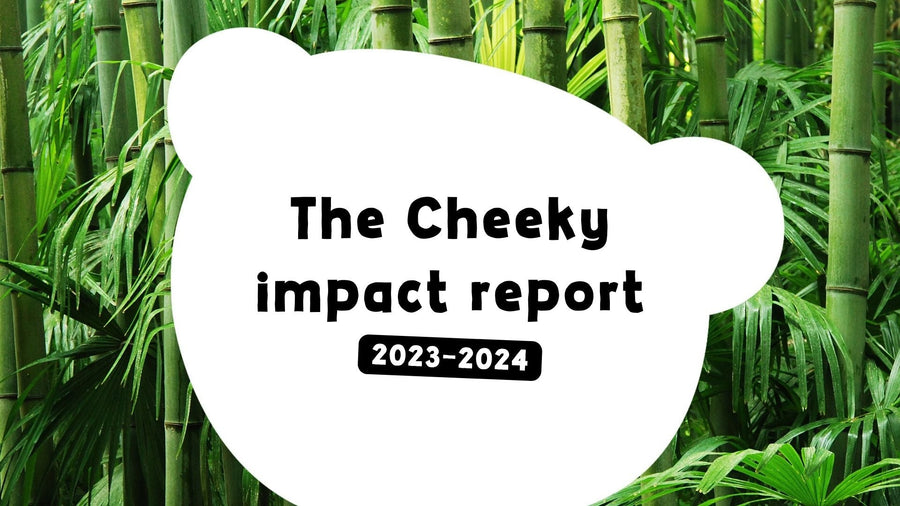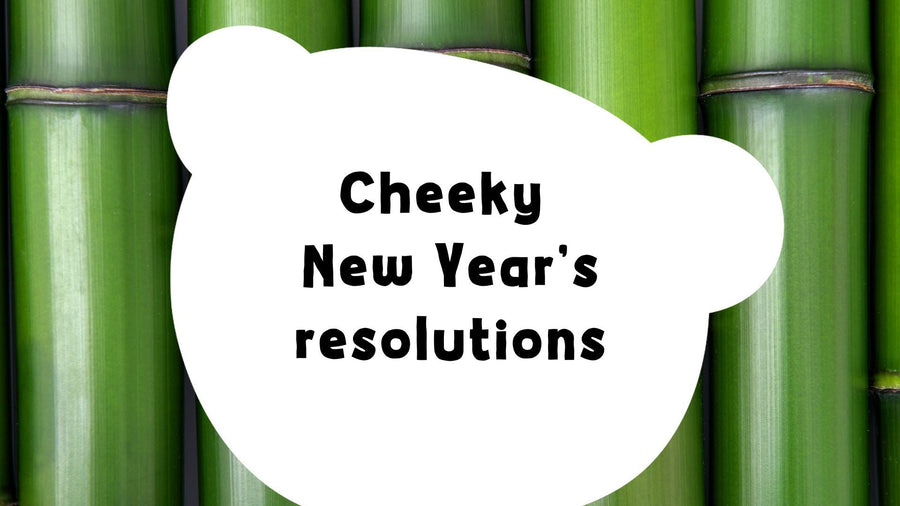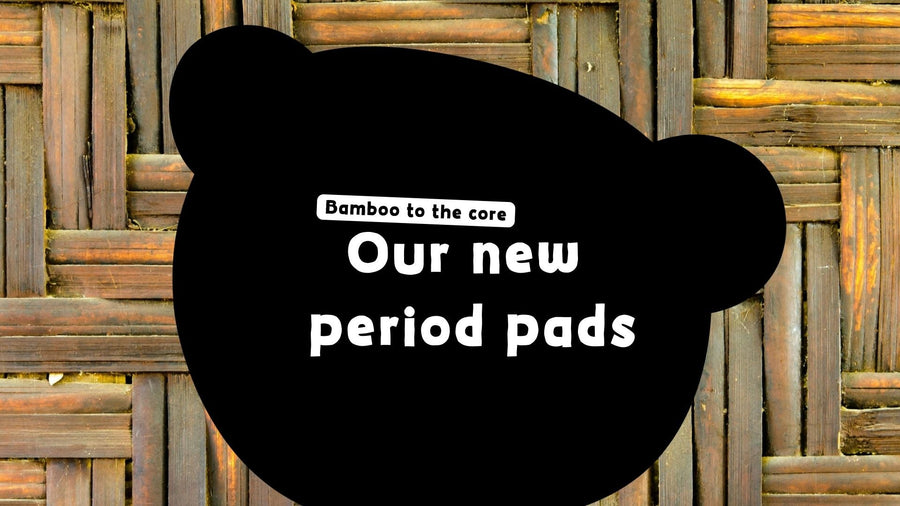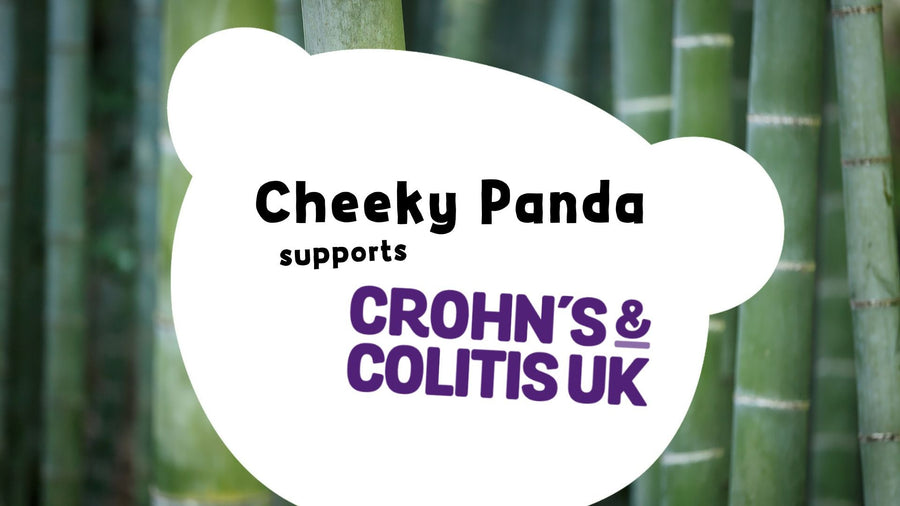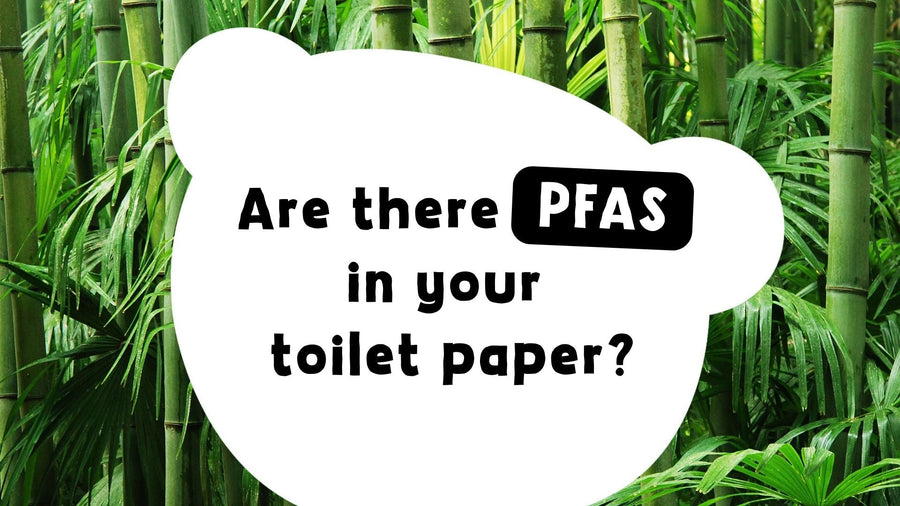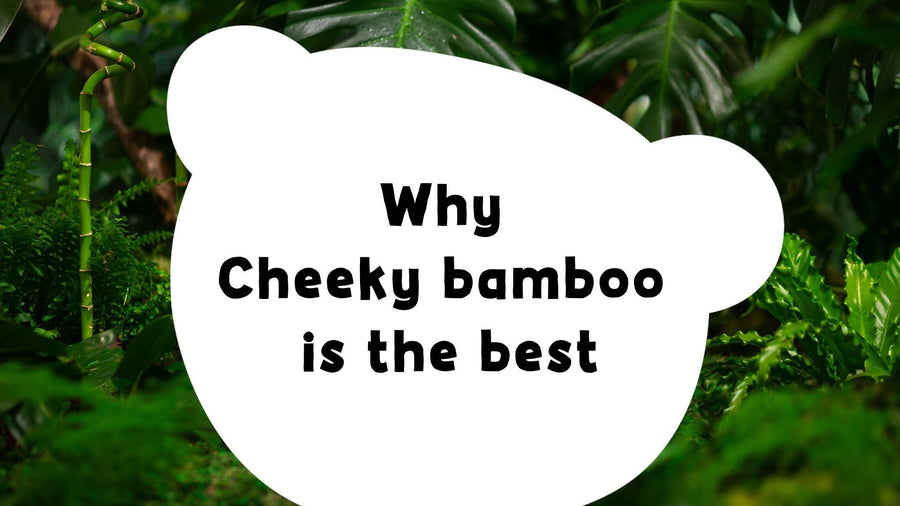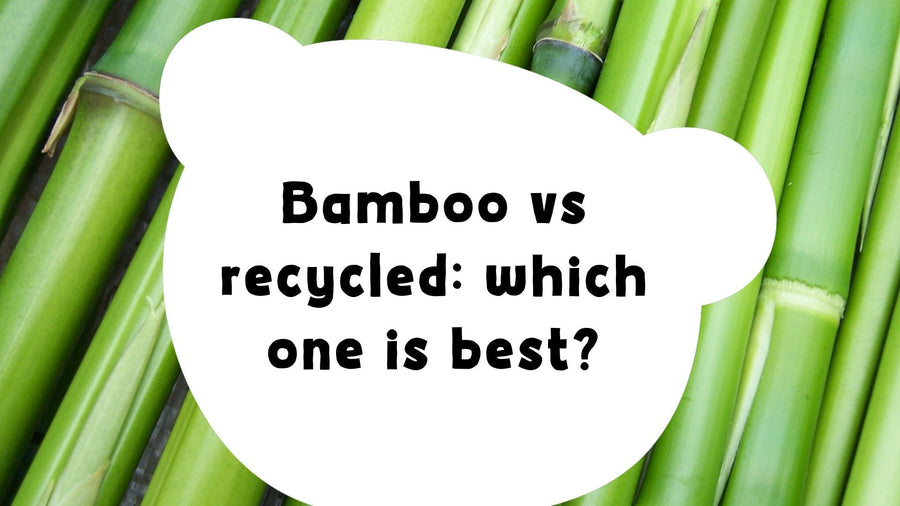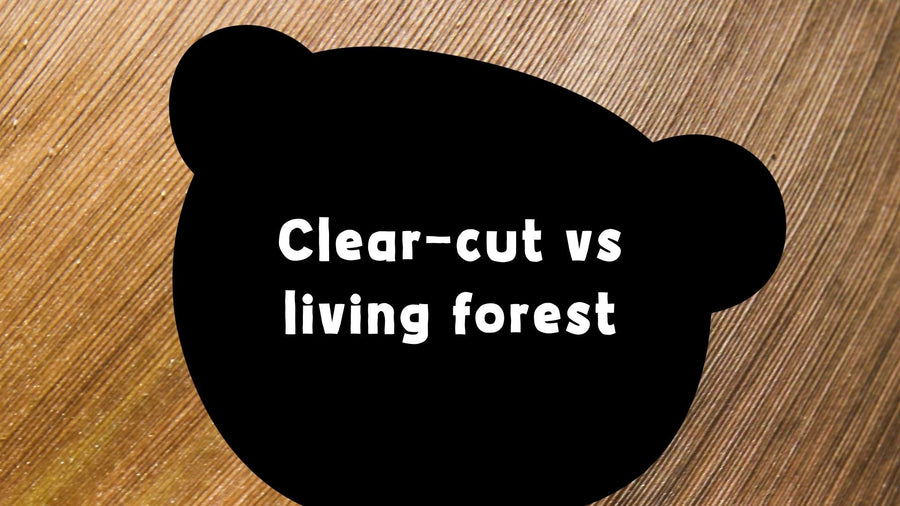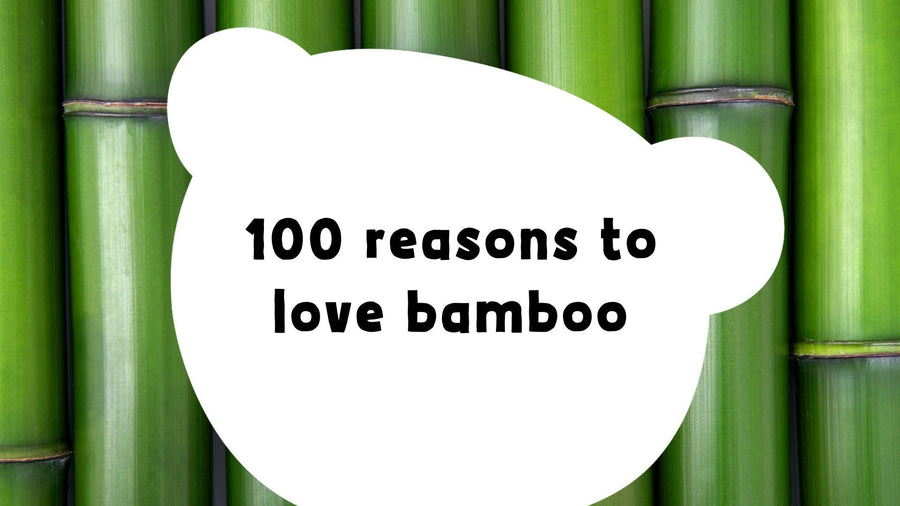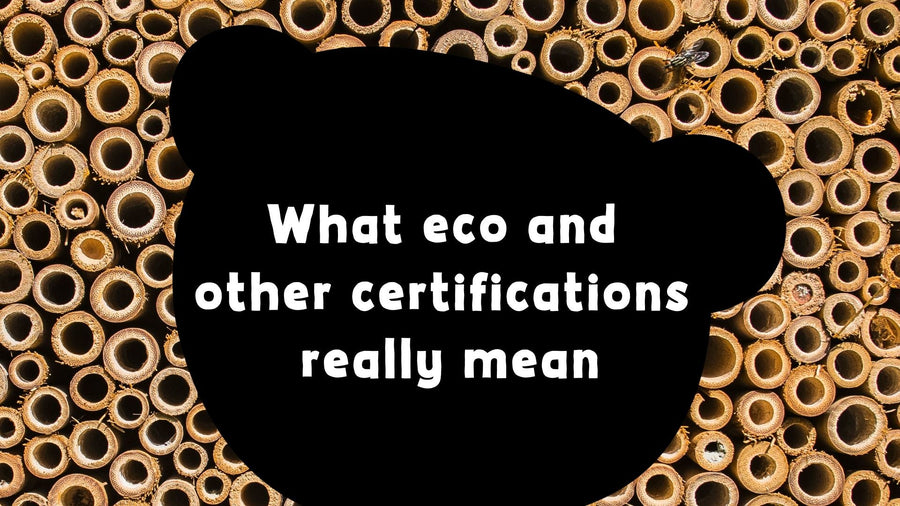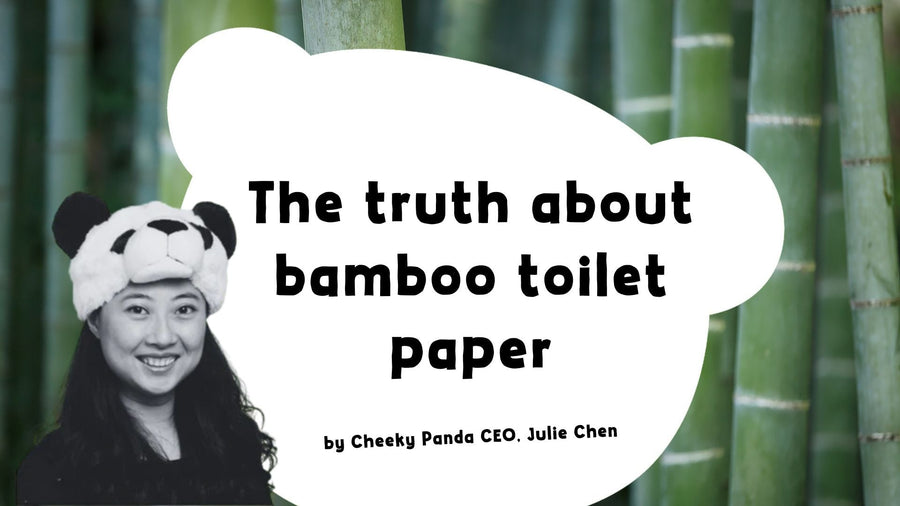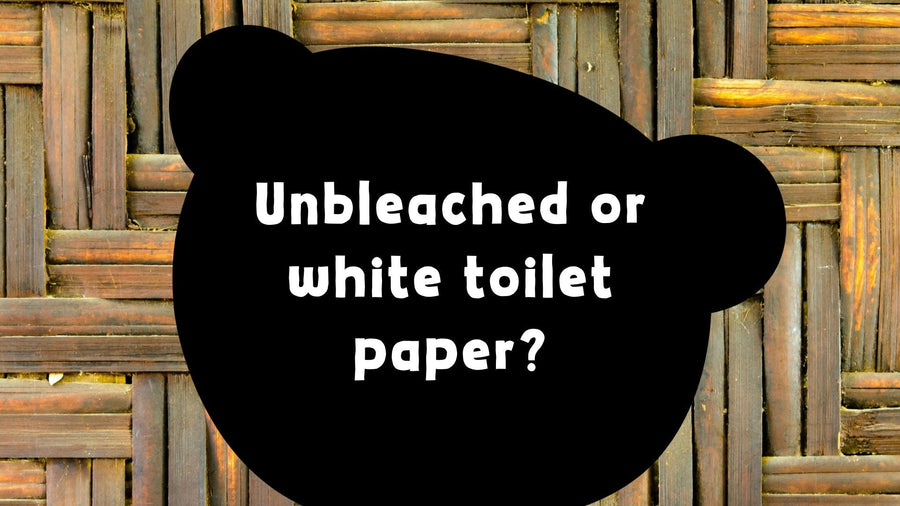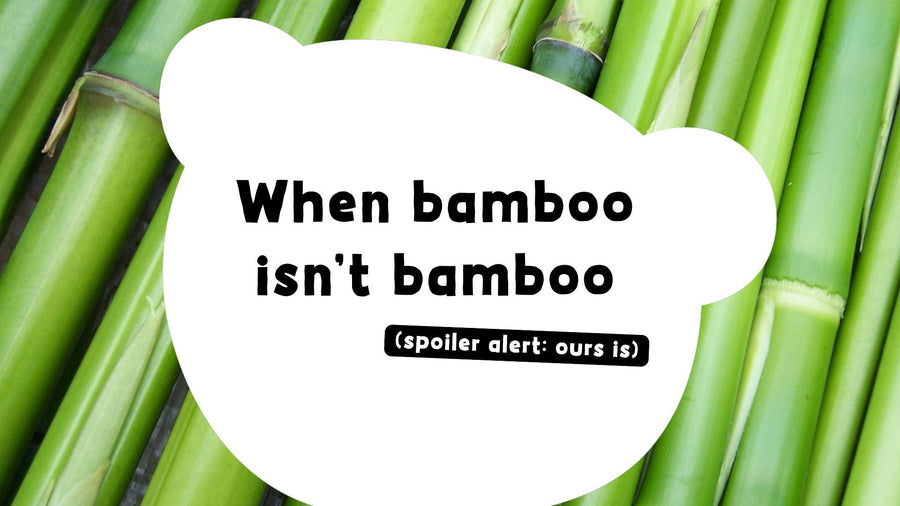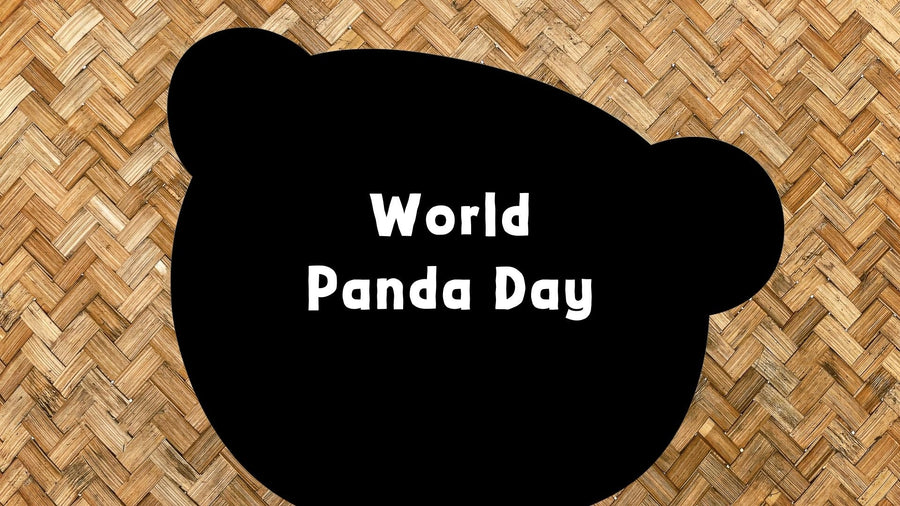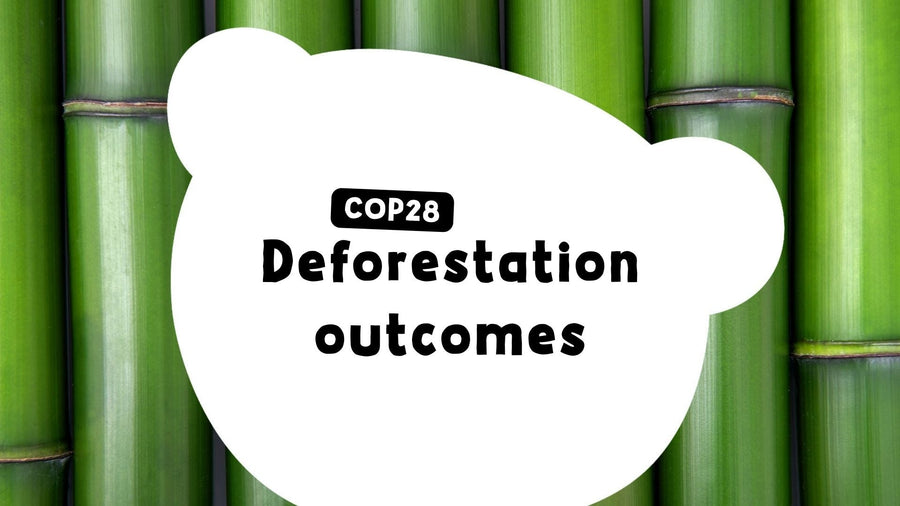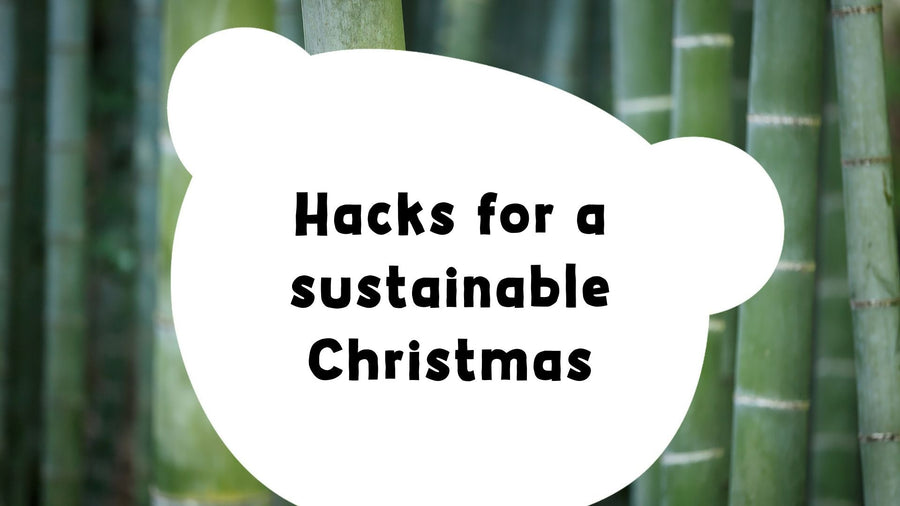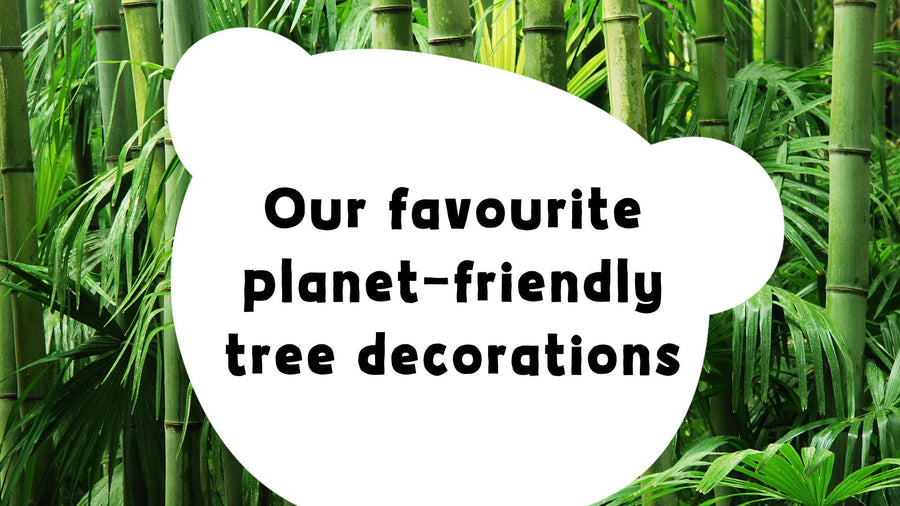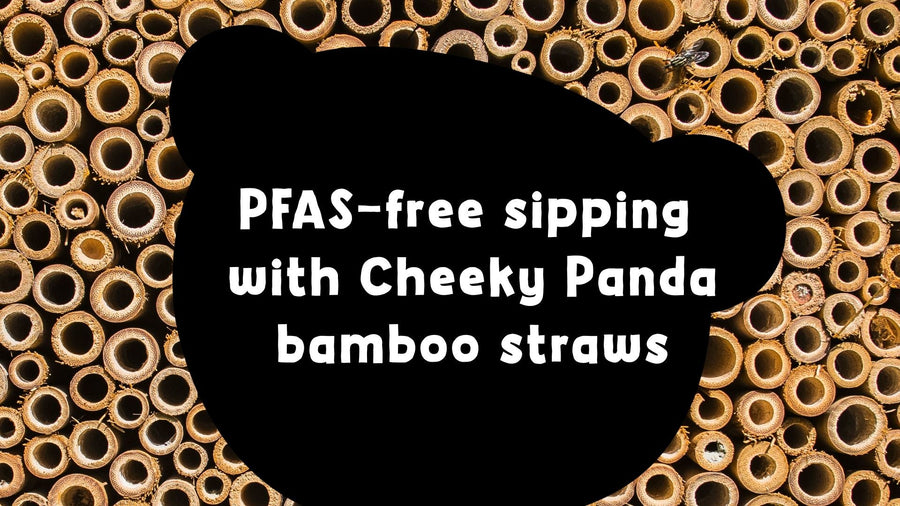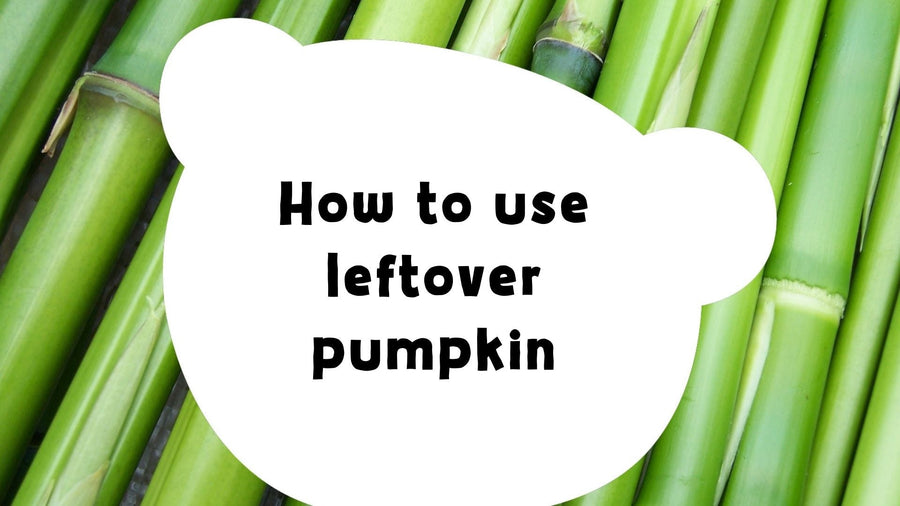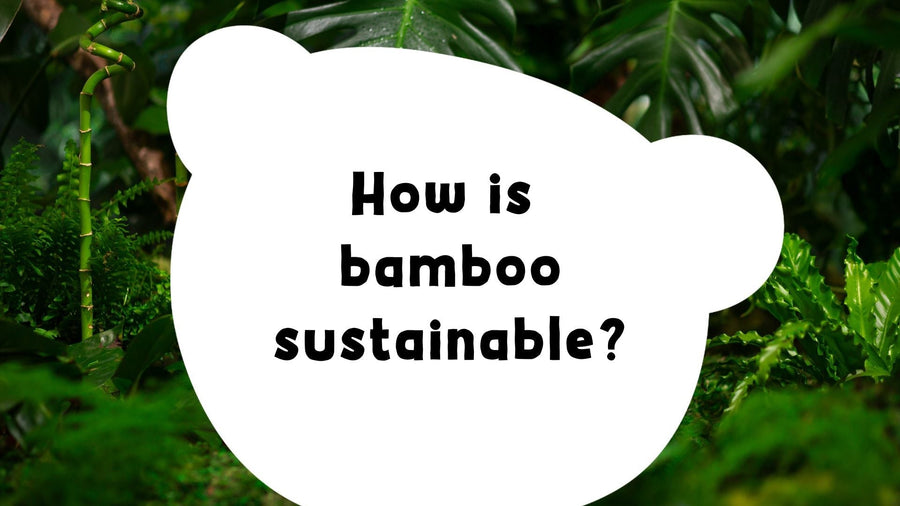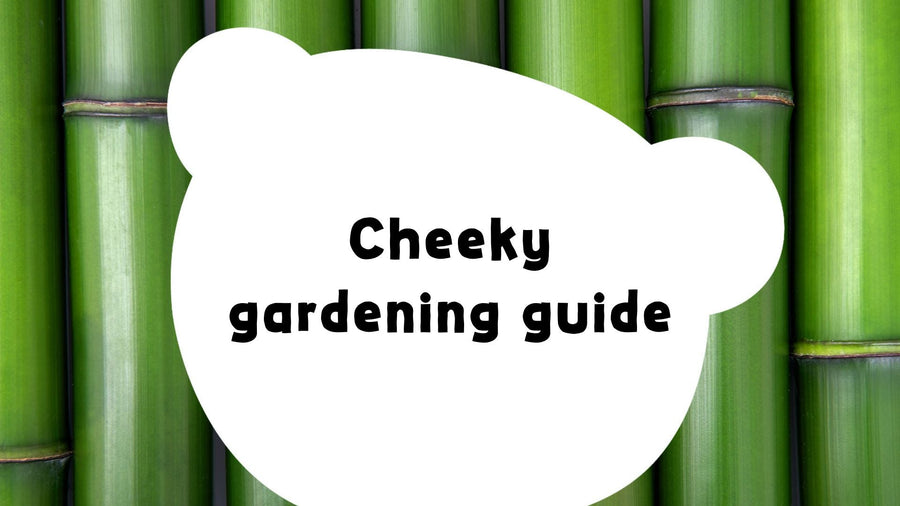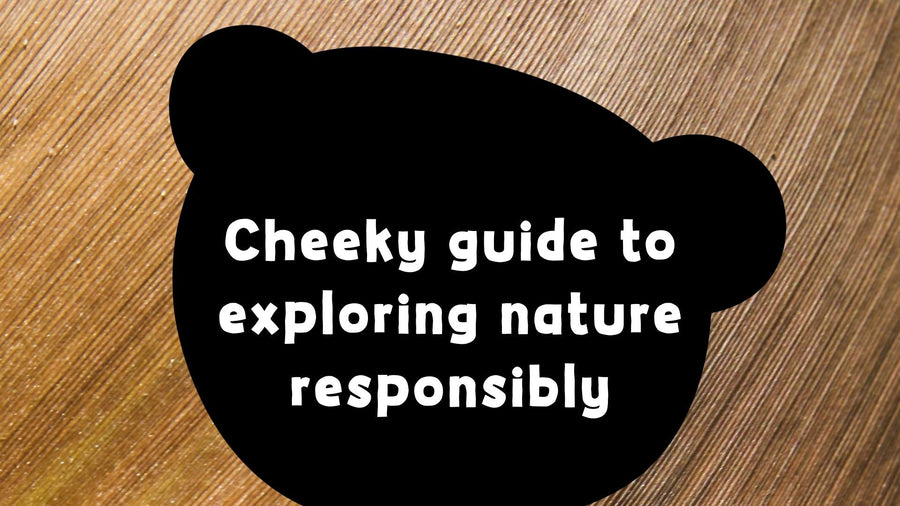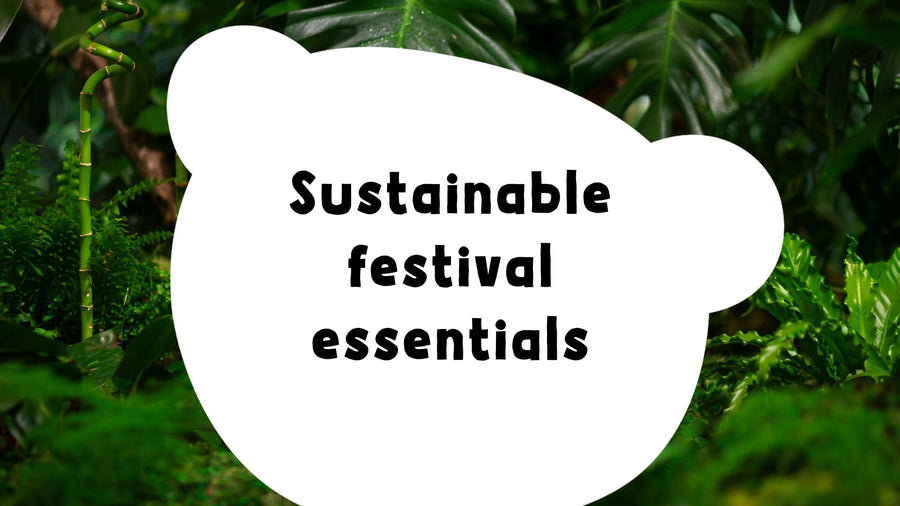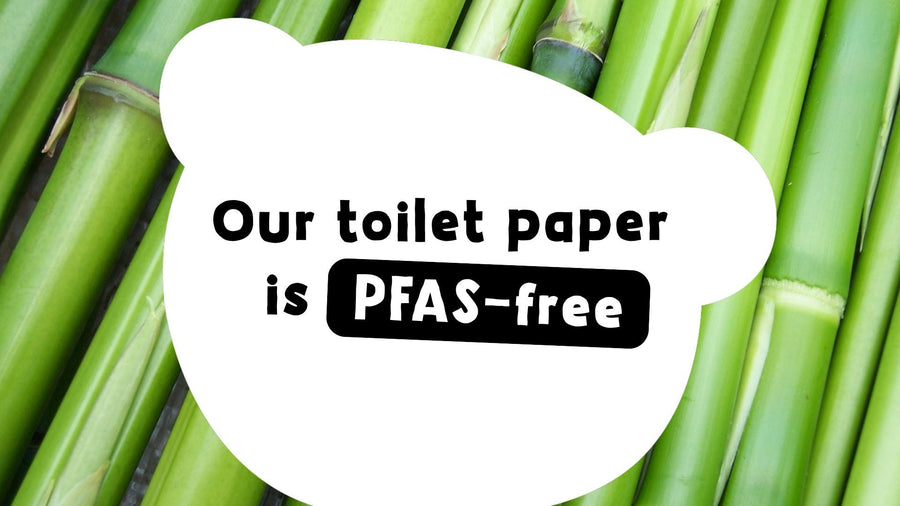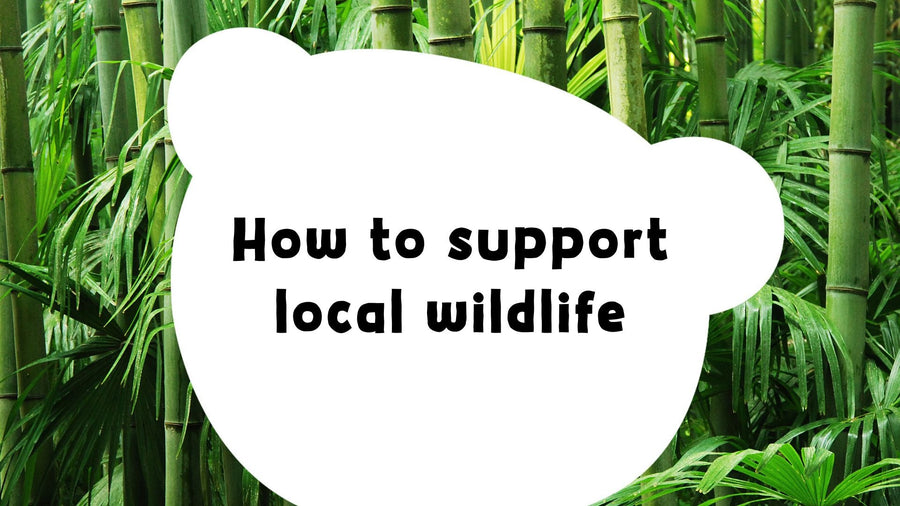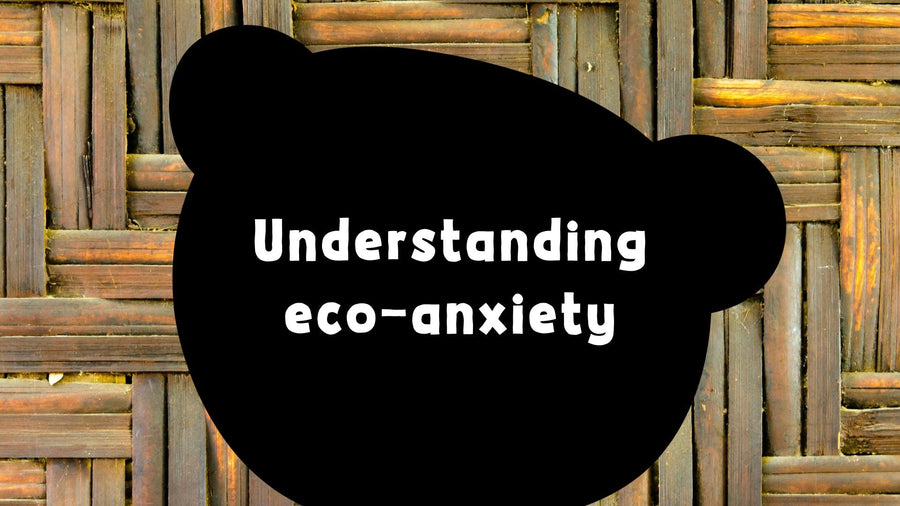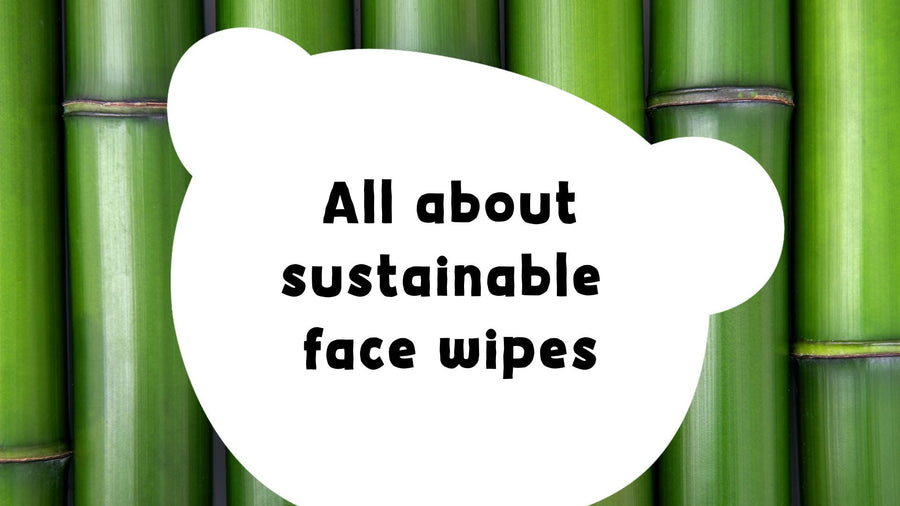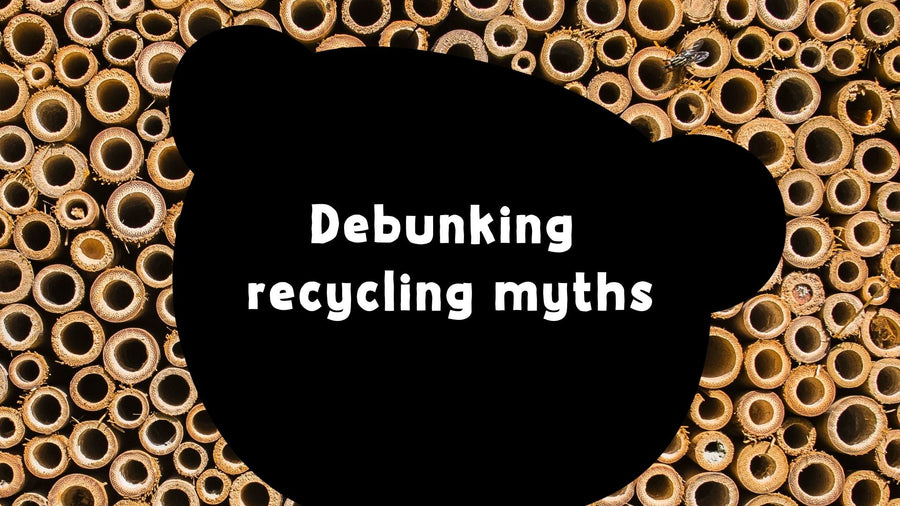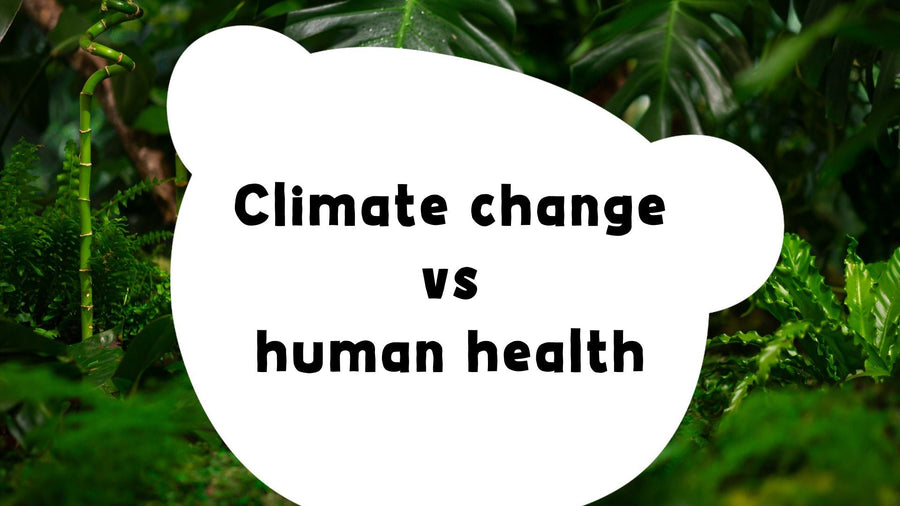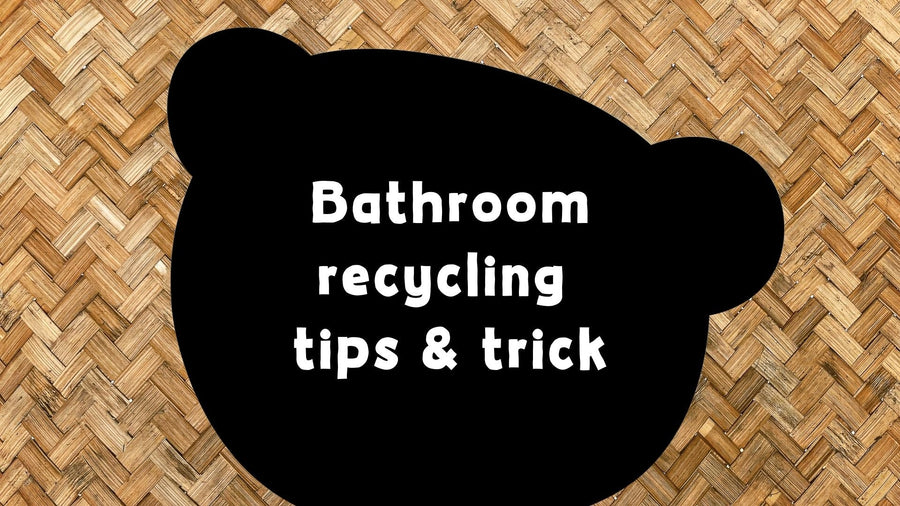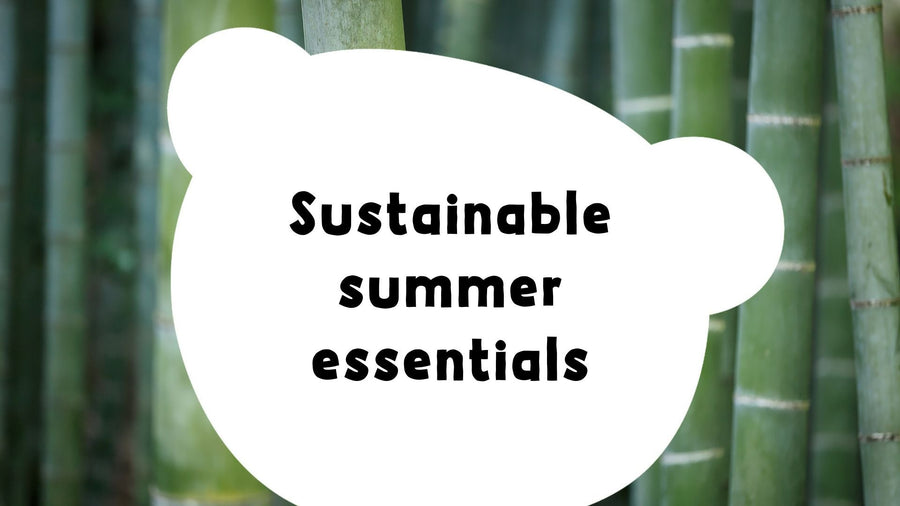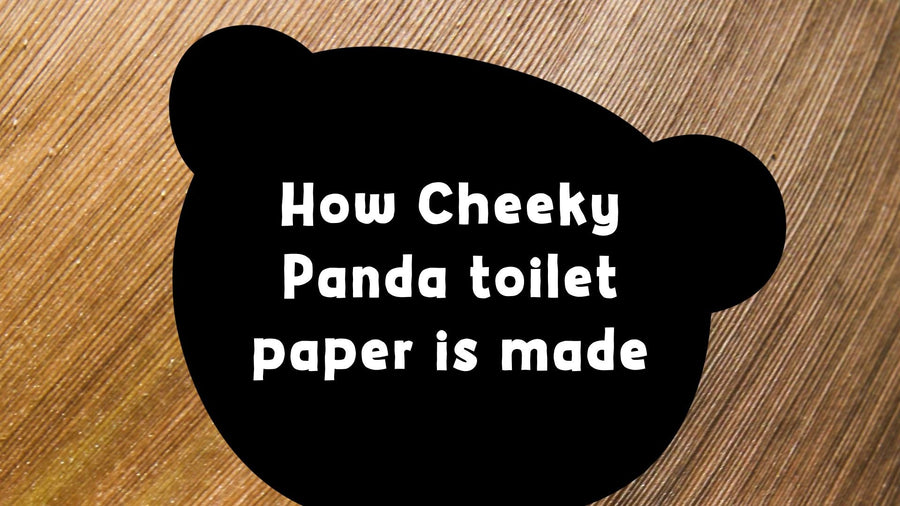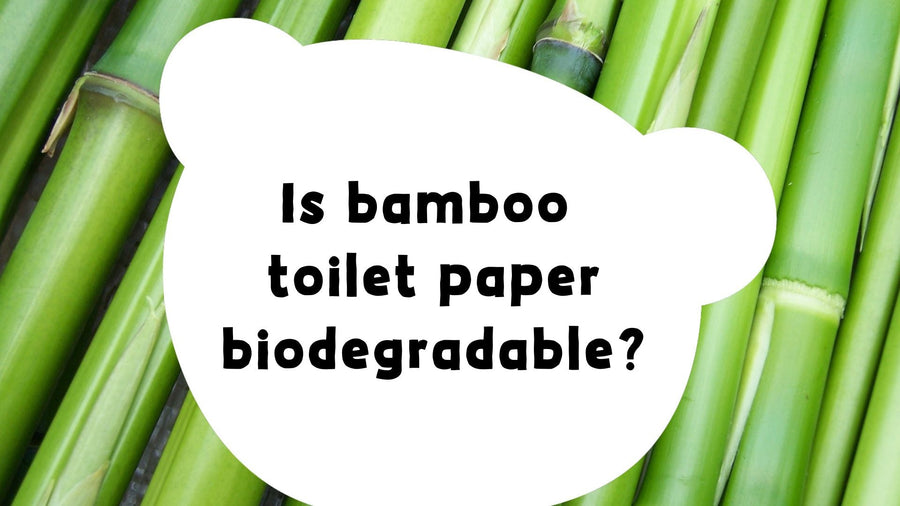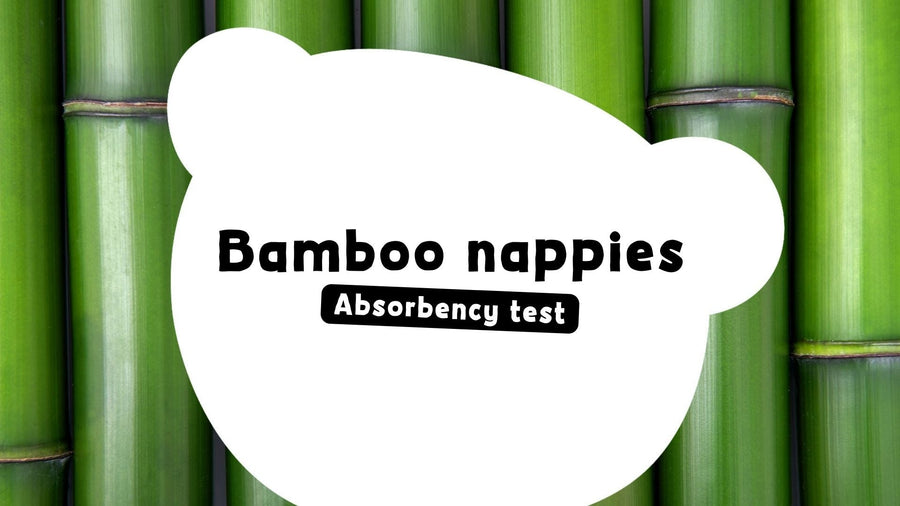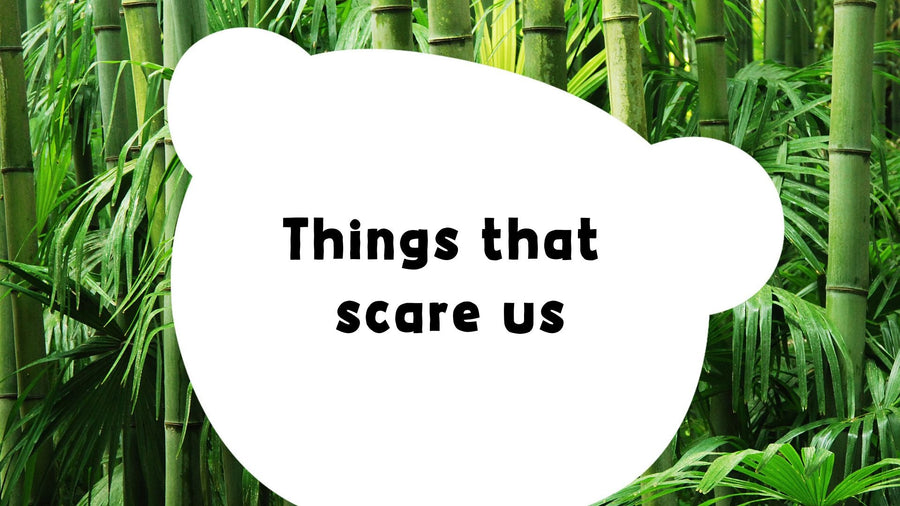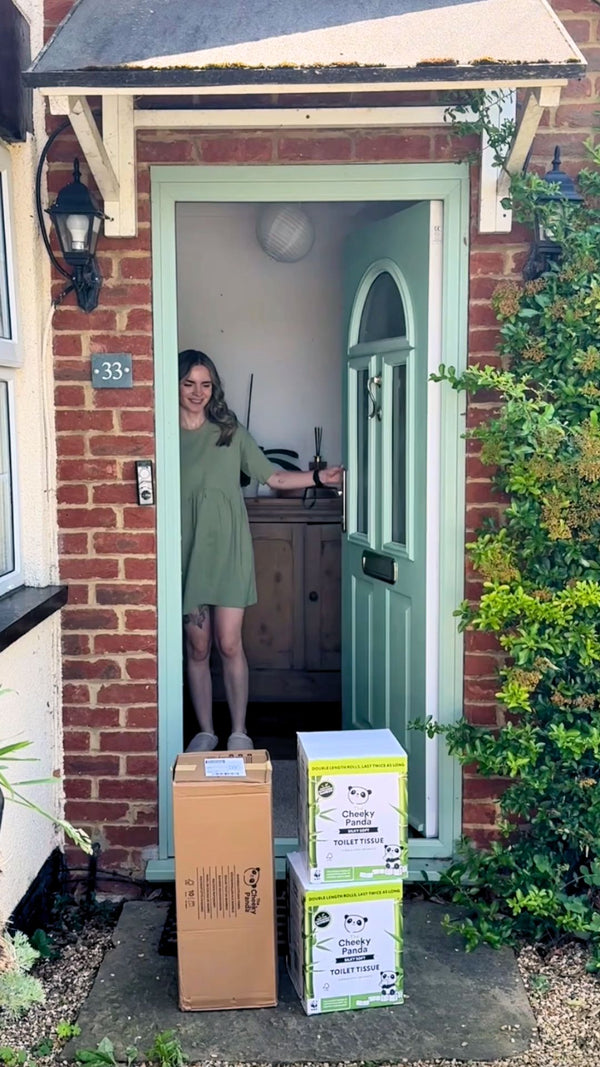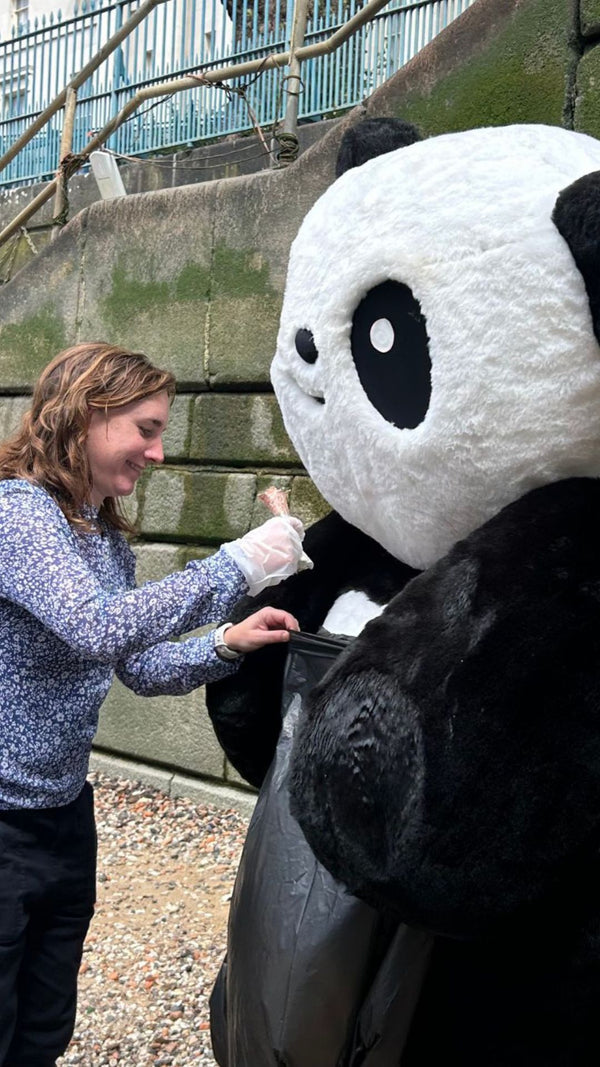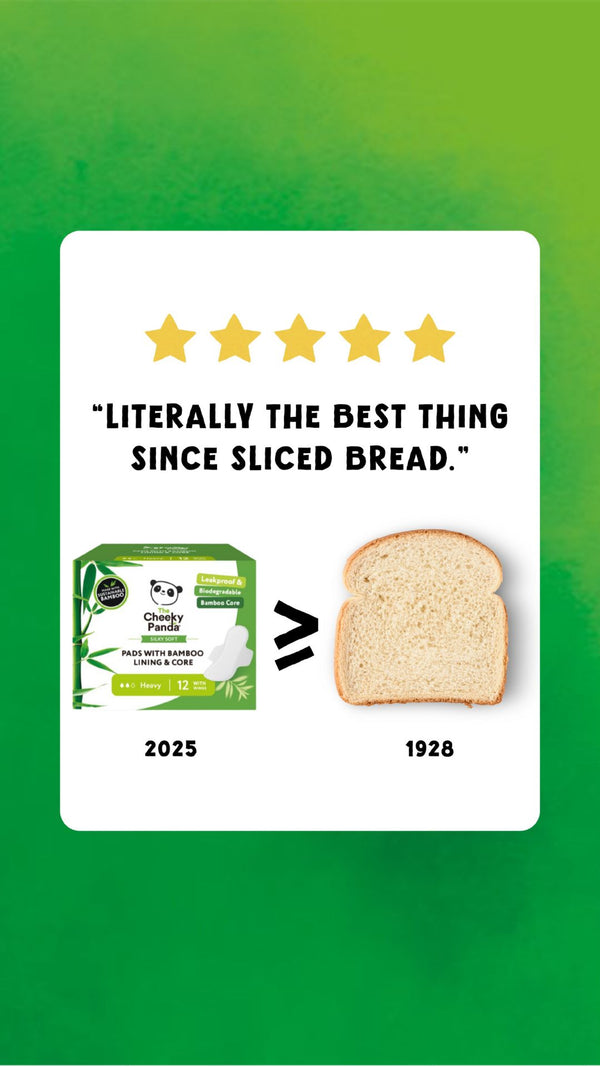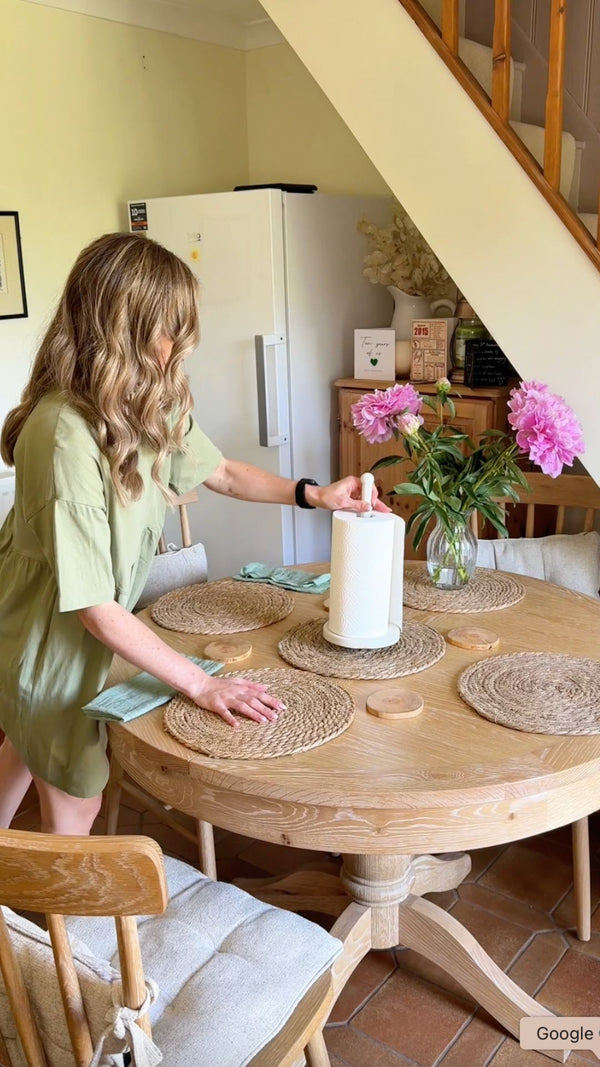Most of us use toilet paper every day — but have you ever stopped to think about where it comes from, how it’s made, or what it costs the planet?
Turns out, traditional rolls are often produced from virgin tree pulp, contributing to deforestation, high water use, and unnecessary carbon emissions.
Eco-friendly toilet paper offers a better way. Made from rapidly renewable or recycled materials, and packaged without plastic, it’s designed to deliver comfort and cleanliness with a lighter footprint. Whether it’s bamboo, recycled fibres, or other sustainable sources, the goal is simple: the same reliable softness, minus the environmental harm.
In this guide, we’ll break down what “eco-friendly” really means, compare bamboo and recycled options, explain how to tell genuine sustainability from greenwashing, and show how brands like Cheeky Panda are making it easy to choose toilet paper that’s better for you — and for the planet.
What makes toilet paper eco-friendly?
Eco-friendly toilet paper is designed to minimise environmental impact across its entire life cycle — from the materials used to how it’s packaged and transported. To understand what makes one toilet roll greener than another, there are four key factors to consider: material source, manufacturing process, packaging, and certifications.
1. Material Source
Is bamboo toilet paper really better than traditional and recycled toilet paper?
First things first: what is traditional toilet paper made from? Spoiler alert: trees—700 millions of them chopped down every year (that's 1.9 million trees per day!) just to be flushed away.¹ In the UK alone, we could be wiping out 12 million trees per year. Picture 318 Wembley stadiums packed with trees—now imagine mowing them all down for toilet paper. That's a straight red card.¹
And it gets worse: many brands still use virgin wood pulp—aka brand-new trees, turned into toilet paper, used once, then flushed. Not exactly a winning strategy.
So if you’re keen to make the swap for eco-friendly toilet paper, check that it’s made using renewable or recycled fibres instead of virgin wood pulp. Here’s what to look out for:
-
Bamboo: grows up to 30× faster than trees², regenerates without replanting³, and captures more carbon per hectare⁴.
-
Recycled paper: reuses post-consumer waste, reducing landfill but often needs more water and chemicals to process, and produces a rougher texture.
-
FSC-certified pulp: ensures wood or bamboo is sourced from responsibly managed forests that protect biodiversity and workers’ rights.
The most sustainable options combine these approaches — using fast-growing or reclaimed fibres coming from sustainably managed sources as certified by FSC.
2. Manufacturing Process and Carbon Impact
Does eco toilet paper really have a lower carbon footprint?
Eco-friendly rolls are typically made in mills that:
-
Use renewable energy or offset electricity consumption.
-
Avoid harsh bleaching chemicals such as chlorine.
-
Optimise water recycling and waste recovery during production.
Every step — from pulping to packaging — contributes to the carbon footprint. When made from bamboo or recycled fibres, lifecycle emissions can be up to 65 % lower than conventional wood-pulp toilet paper, especially when transport is optimised and packaging is plastic-free.
3. Packaging
Why does plastic-free packaging matter?
Even if the paper itself is sustainable, packaging can undermine its benefits.
Eco-friendly toilet paper should come in:
-
Plastic-free wraps made from paper or compostable bioplastic alternatives.
-
Recyclable boxes printed with water-based inks.
-
Minimal transport packaging, reducing total material weight.
Switching from plastic to paper packaging can eliminate hundreds of kilograms of plastic waste.
4. Certifications and Proof
How can I tell if a toilet paper brand is genuinely sustainable?
Look for third-party certifications that validate sustainability claims:
-
FSC® – responsibly sourced materials.
-
B Corp™ – measured and verified social and environmental performance.
-
Carbon Neutral / ClimatePartner / Carbon Trust – verified emission offsets or reductions.
-
Vegan / Cruelty-Free – no animal testing or ingredients.
These independent marks verifiable proof that the brand meets recognised standards.
5. Quick Comparison
Bamboo vs recycled vs virgin pulp — what difference does it make?
|
Type |
Main fibre source |
Typical carbon footprint per roll* |
Plastic-free packaging |
Average softness |
Renewability |
|
Conventional (virgin wood) |
Tree pulp |
~245 g CO₂e |
No |
Soft |
High deforestation risk |
|
Recycled |
Recycled paper (pre or post consumer) |
~322 g CO₂e |
Yes / partial |
Rough |
Medium (reuses waste, chemical-heavy processing) |
|
Cheeky Panda Bamboo |
Fast growing bamboo grass |
~177 g CO₂e⁵ |
Yes |
Really soft |
High (rapid regrowth, no replanting) |
*Indicative lifecycle values based on averages of published LCA studies (specific data varies by brand and transport distance).
The truth about toilet paper eco claims
Not all “green” toilet paper is created equal. As sustainability becomes a selling point, so do vague or misleading environmental claims. Understanding what’s real — and what’s marketing — helps you choose rolls that actually make a difference.
-
Common Greenwashing Pitfalls
What should you watch out for?
-
“Biodegradable” without context:
All paper biodegrades eventually, but that doesn’t mean it’s sustainable. The key is how it’s sourced and produced — biodegradability alone doesn’t offset deforestation or high-emission manufacturing.
-
“Natural” or “eco” with no proof:
These are unregulated terms. Look for third-party certifications (like FSC®, Carbon Neutral, or B Corp™) that verify sustainability rather than relying on marketing language.
-
Blends:
Some toilet papers contain only a small percentage of recycled or bamboo fibre. Genuine eco options are transparent about their content — ideally 100%.
-
Misleading packaging claims:
Plastic wrappers labelled “recyclable” may only be accepted at specialist facilities. Truly eco-friendly brands use plastic-free, compostable, or paper-based packaging with clear disposal instructions.
-
How to check for real eco credentials
Which labels and standards matter?
Look for credible, verifiable marks:
-
FSC® (Forest Stewardship Council): Confirms fibres come from responsibly managed forests or verified sources.
-
Carbon Neutral / ClimatePartner / Carbon Trust: Indicates emissions are measured and offset or reduced.
-
B Corp™ Certification: Recognises broader environmental and social accountability.
-
EU Ecolabel / Nordic Swan: Validates reduced impact across the product’s lifecycle.
If a brand makes strong claims but lists no independent certifications, approach with caution.
How to choose the right eco toilet paper
Once you know what makes toilet paper sustainable, the next step is choosing the right one for your home. The best eco option should balance softness, value, convenience, and verified sustainability — without compromise.
-
Softness and quality
Does eco toilet paper feel the same as regular rolls?
Softness isn’t just about comfort — it also affects how much paper you use.
-
Ply count: Three-ply paper offers better strength and absorbency, meaning fewer sheets per use.
-
Fibre type: Bamboo fibres are naturally smooth and strong, helping prevent tearing and overuse.
-
Processing: Look for brands that refine fibres gently without harsh chemicals; it improves texture and durability.
High-quality eco toilet paper, like The Cheeky Panda Bamboo Toilet Paper, delivers a soft, reliable clean while reducing waste.
-
Price and value
Does eco-friendly toilet paper cost more?
At first glance, sustainable rolls may look pricier — but cost-per-use tells a different story.
-
Durability matters: Stronger sheets reduce overuse and waste.
-
Roll size & sheet count: Longer rolls mean fewer replacements and less packaging.
-
Subscription savings: Regular delivery options often reduce cost per roll.
Instead of comparing cost per sheet, focus on cost per use — a truer measure of value and impact. So we’ve done the maths:
|
Brand |
Material |
Sheets per roll |
Ply count |
Est. cost per wipe |
|
Cheeky Panda |
Bamboo |
380 |
3 ply |
£0.029 |
|
Andrex* |
Wood pulp |
190 |
2 ply |
£0.043 |
|
Who Gives A Crap |
Bamboo |
370 |
3 ply |
£0.032 |
|
Supermarket own brand* |
Wood pulp |
190 |
2 ply |
£0.033 |
Based on RRP for Andrex Complete Clean (24-pack) and Sainsbury’s Super Softer (9-pack)
-
Delivery and convenience
Convenience helps eco choices stick.
-
Opt for reliable subscriptions so you never run out — with flexible delivery and plastic-free packaging.
-
Bulk ordering cuts transport emissions and saves money over time.
-
Look for brands offering pause or skip options so you stay in control of your deliveries.
Cheeky Panda subscriptions make it simple to keep your bathroom stocked up with super soft, sustainable bamboo toilet rolls.
Why Cheeky Panda leads in eco toilet paper
At Cheeky Panda, sustainability isn’t an add-on — it’s built into every roll. From sourcing to packaging, we’re committed to proving that comfort, convenience, and care for the planet can go hand in hand.
-
Certified sustainability you can verify
Independent proof over empty claims.
Our bamboo toilet paper and wider product range are backed by trusted third-party standards:
-
FSC® Certified (FSC 100%): Every roll uses responsibly sourced bamboo from verified plantations that protect biodiversity.
-
B Corp™ Certified: Recognised for meeting high standards of social and environmental performance.
-
Vegan & Cruelty-Free: No animal testing or animal-derived materials as certified by The Vegan Society and Leaping Bunny.
You can explore our full sustainability reporting and impact updates in our Sustainability Hub.
-
What customers say
Real users, real reviews.
Over 10,000 verified customers rate Cheeky Panda 4.7★ on average for:
-
Softness and strength: “just as comfortable as premium brands.”
-
Great value: “Very good value and lasts much longer.”
-
Sustainability and packaging: “no plastic, no guilt.”
-
Service and reliability: “subscription makes it effortless.”
Cheeky Panda bamboo toilet roll is also rated the No.1 eco toilet paper choice by Good Housekeeping, and the only sustainable Best Buy toilet paper by Which?, further confirming its trusted performance and sustainability leadership.
-
Choose better for you and the planet
Sustainable. Soft. Smart.
Whether you’re switching for the environment, comfort, value or convenience, Cheeky Panda makes the choice simple.
Explore the full range:
Final Tips
When comparing brands, ask yourself these simple questions:
-
What is it made from?
-
Can the brand prove its claims?
-
Are the products good value and great quality?
-
Will it make my routine easier, not harder?
If the answer is yes across all three, you’ve found an eco toilet paper worth sticking with.
Want to shortcut the process? Choose Cheeky Panda bamboo toilet paper!
FAQs — Eco-friendly toilet paper
-
What is eco-friendly toilet paper made from?
Eco-friendly toilet paper is made from renewable or recycled fibres such as bamboo or post-consumer recycled paper, preferably FSC®-certified. These materials reduce deforestation and resource use compared with virgin wood. Cheeky Panda uses fast-growing, FSC 100% certified bamboo and plastic-free packaging. Always check for recognised certifications like FSC®, Carbon Neutral, or B Corp™ to confirm genuine sustainability.
-
Is bamboo toilet paper really sustainable?
Yes — when it’s responsibly sourced. Bamboo regenerates without replanting, absorbs large amounts of carbon, and requires less water than timber. Cheeky Panda uses FSC-certified bamboo (FSC 100%), grown outside panda habitats. Sustainability also depends on transparent supply chains and efficient transport, both of which we monitor and optimise through regular impact reporting.
-
Which is better: bamboo or recycled toilet paper?
Both reduce environmental impact in different ways. Recycled rolls reuse existing paper waste, while bamboo provides a renewable, tree-free alternative that delivers softness and strength similar to premium wood-pulp brands. Cheeky Panda’s bamboo toilet rolls combine comfort with verified lower lifecycle emissions, making them a strong option for households seeking both performance and sustainability.
-
Is eco-friendly toilet paper more expensive?
Upfront, eco options may cost slightly more per roll, but they usually last longer and reduce overuse. Cost-per-use—not cost-per-sheet—is the fairer comparison. Cheeky Panda helps lower total cost through subscriptions, bulk packs, and optimised roll length and ply count. In fact, Cheeky Panda’s double rolls offer a cheaper cost-per-use than Andrex, and a number of supermarket own brands.
-
Does it feel the same as regular toilet paper?
High-quality bamboo toilet paper, like Cheeky Panda’s, feels just as soft and strong as premium wood-pulp brands. Bamboo’s long, smooth fibres create a naturally silky texture while maintaining excellent strength and absorbency. Many users find it gentler on sensitive skin and prefer its clean, lint-free finish.
-
How can I dispose of eco toilet paper sustainably?
Used toilet paper should be flushed or disposed of according to local plumbing guidance — it’s fully biodegradable. Cheeky Panda’s plastic-free packaging can go into household recycling. Avoid plastic films, even those labelled “recyclable”. Responsible disposal keeps your switch to eco toilet paper low-impact from start to finish.
--
¹ EDGE (2022) Toilet Paper Environmental Sustainability Report: Environmental Impacts of Traditional Toilet Paper Usage.
² Scurlock, J. M. O., Dayton, D. C., & Hames, B. (2000). Bamboo: An overlooked biomass resource?. 19(4), 229–244.
³ Katayama, N., Kishida, O., Sakai, R., Hayakashi, S., Miyoshi, C., Ito, K., Uchida, K., Koyama, A., & Miyazaki, T. (2015). Response of a wild edible plant to human disturbance: Harvesting can enhance the subsequent yield of bamboo shoots. PLOS ONE, 10(12), e0146228.
⁴ INBAR (International Bamboo and Rattan Organization); Song, X., Zhou, G., Jiang, H., Yu, S., Fu, J., & Li, W. (2011). Carbon sequestration by Chinese bamboo forests and their ecological benefits: assessment of potential, problems, and future challenges. Environmental Reviews, 19(NA), 418–428.
⁵ Carbon footprint Ltd, September 2024, Toilet Tissue LCA Report, Cradle to Gate to enable comparison across human activity
